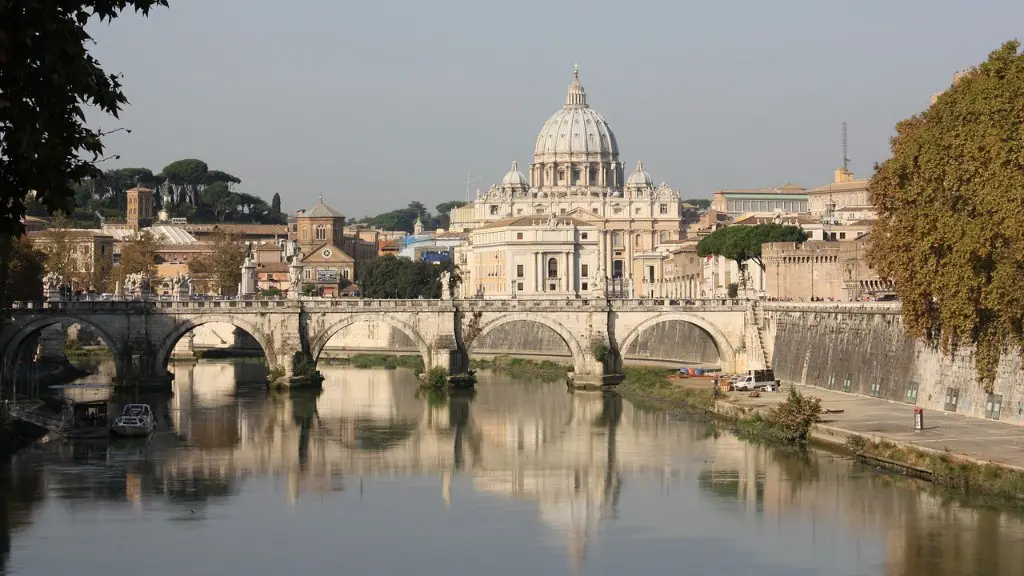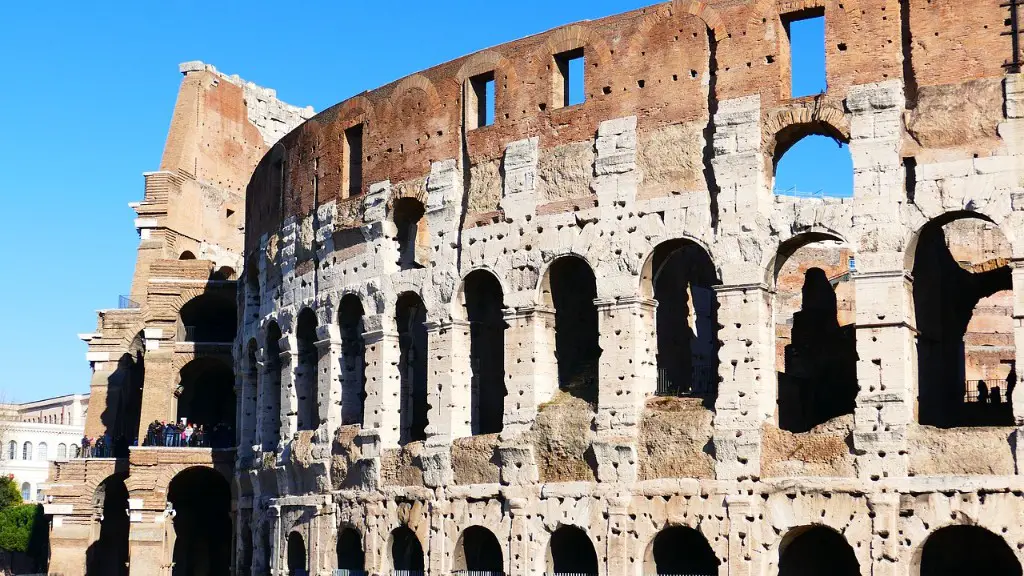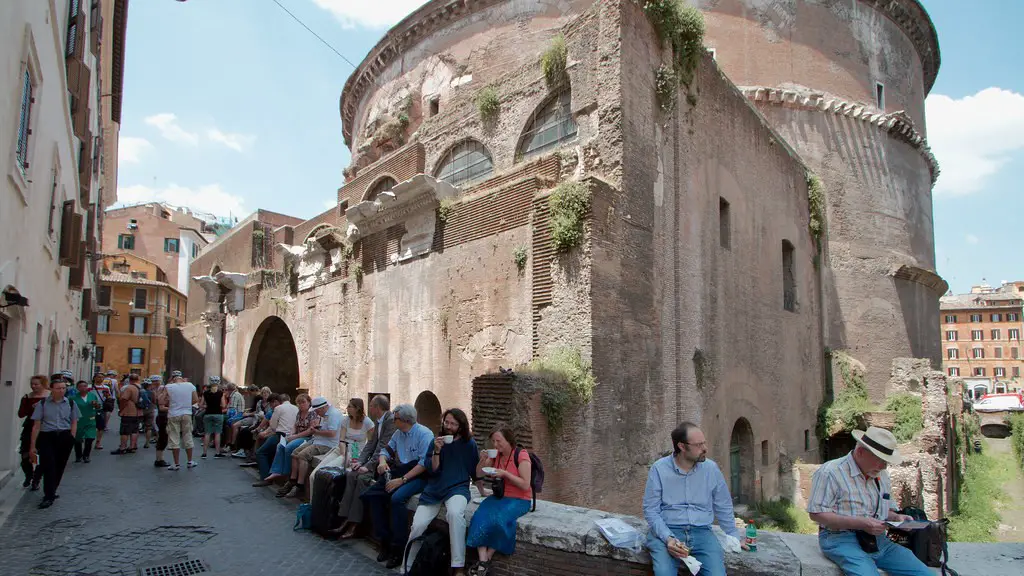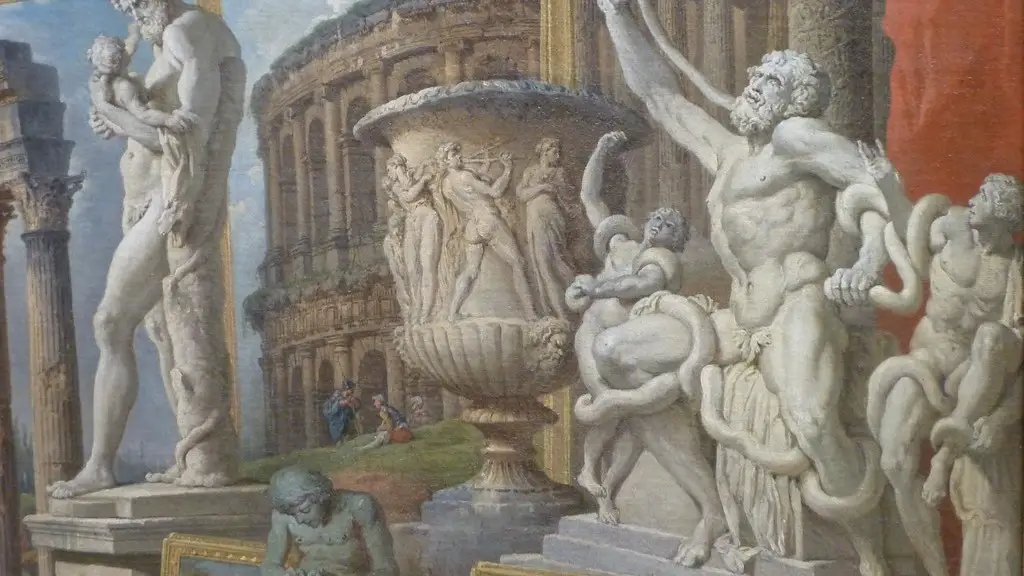The ancient Romans built domes using a technique called corbeling. Corbeling is a type of stonework where each successive layer of stone is slightly bigger than the one below it, creating a stepped effect. This technique allowed the Romans to build very large and stable domes.
The ancient Romans built domes by stacking rows of bricks or stone blocks on top of each other in a circular pattern. The weight of the bricks or stones would compress the lower rows, making the dome structurally stable.
What materials did the Romans use to build domes?
The ancient Romans were very skilled in engineering and construction. They used concrete to build some of the most impressive structures in the world. The Pantheon Dome is one of the most famous examples of their work. It is still standing today and is a popular tourist destination. The Caesarea Maritima is another impressive structure built by the ancient Romans. It is a harbor in the Mediterranean Sea that is still in use today.
Domes are one of the most efficient structural forms. They are strong in compression and because of their spherical shape, they resist wind and earthquake forces very well. The first domes were likely made from saplings, reeds, or timbers and covered with thatch, turf, or skins. As people began to settle in one place and their buildings became more permanent, they began to use more durable materials such as rammed earth, mud-brick, or stone. The use of domes has continued throughout history and they can be found in a variety of architectural styles.
Did the Romans create domes
The ancient Romans were not the inventors of domes, but they did refine the techniques used to build them. They developed an extensive repertoire of shapes and sizes, and ascribed a variety of functions and meanings to the domes they built.
The system of using brick lattices to create closed domes was first used during the 4th century. This system employs a type of brick lattice that is then filled in with concrete to create a closed dome. The vertical lines of bricks essentially form a series of arches that are connected at the top of the dome by a common keystone. This system was used extensively during the 4th century and continues to be used today.
Why is Roman concrete so strong?
Al-tobermorite is a very rare hydrothermal mineral that forms in concrete. It is long known to give Roman concrete its strength. However, it is very difficult to incorporate it in concrete.
The researchers from MIT think that the lime clasts are the key to Roman concrete’s millennia long success. The clasts are small white chunks which originate from lime, and are found ubiquitously through Roman concrete but not in modern day concrete. The clasts help to prevent the concrete from cracking and breaking down over time.
What are the 3 types of domes?
There are three common types of domes: the Schwedler dome, the Kiewitt dome, and the geodesic dome. Each has its own distinct pattern.
The Schwedler dome is characterized by meridional ribs and circumferential rings, which are braced by diagonal bars (Figure 1A). The Kiewitt dome has a more intricate pattern, with a series of interlocking hoops forming the structure (Figure 1B). Finally, the geodesic dome is the most complex of the three, with a series of triangular panels forming the surface (Figure 1C).
Each type of dome has its own advantages and disadvantages. The Schwedler dome is the strongest and most stable of the three, but it is also the heaviest and most expensive to construct. The Kiewitt dome is lighter and cheaper to build, but it is not as strong as the Schwedler dome. The geodesic dome is the lightest and most economical of the three, but it is also the least stable.
Which type of dome is the best suited for your project will depend on a number of factors, including budget, weight, and stability.
The Romans were experts in arch construction and realized that large spaces could be supported with fewer columns or walls if they used arches. This led to the development of the dome, which became one of the most distinctive features of Roman architecture. The use of the dome allowed the Romans to build extremely large and complex structures, such as the Pantheon in Rome.
Why are domes so strong
Domes are strong because of their shape. The dome shape distributes the weight/pressure/force evenly over the entire dome shape, which reduces the load on a single point. We normally think of eggshells as brittle or that they tend to break easily. This is not the case with domes. The eggshell is actually quite strong because of its dome shape.
Domes are a type of architecture that has been used for centuries. They are created by placing a series of arches on top of each other, which creates a dome shape. Domes can be supported by an elliptical or circular wall called a “drum”. If this structure extends to ground level, the round building may be called a “rotunda”. Drums are also called “tholobates” and may or may not contain windows.
What was the first Roman dome?
The Domus Aurea was built by Nero after the great fire of 64 AD. The dome was over 13 meters (43 ft) in diameter and was octagonal in shape. The oculus, or opening at the top of the dome, was made of brick. This is the earliest known example of a dome in the city of Rome itself.
Dome homes are one of the strongest human shelter structures ever conceived. The spherical and symetrical shape of the dome evenly and efficiently distributes weight and stress along the entire structure. Dome homes have been proven to be some of the world’s highest earthquake resistant structures.
How did the Roman invention of domes allow them to build large structures
A dome is a construction that is supported by walls or columns around its perimeter, and that has a spherical, semispherical, or conical shape. Domes are often used to cover large, open spaces in buildings. The dome of the Pantheon in Rome, for example, is 144 feet in diameter and is one of the largest unreinforced concrete domes in the world.
A dome is a hemispherical roof that is supported by a column-free or another support system. The main force that supports a dome is the normal force. This force is exerted by the dome’s structure through contact with the base and the earth. The other forces that contribute to the support of a dome include the weight of the dome and the atmospheric pressure.
Did Roman concrete have blood in it?
The Romans used a mortar mixture of 1 part lime to 4 parts sand. Pliny reported that animal fat, milk, and blood were used as admixtures (substances added to cement to increase the properties). These structures still exist today!
The word “ancient” is key when discussing the strength of Roman structures. These structures took a very long time to develop their strength from seawater. Young cement built using a Roman recipe would not have the initial compressive strength to handle modern usage.
What was the secret ingredient in Roman concrete
The research team found that the ancient Romans made their concrete with quicklime, which is lime in its pure state, rather than the more typical slaked lime. They believe that this gave the concrete “self-healing” properties.
The early 20th-century engineers who designed reinforced concrete structures thought they would last for a very long time – perhaps 1,000 years. In reality, their life span is more like 50-100 years, and sometimes less. The longevity of reinforced concrete structures is limited by a number of factors, including the quality of the materials used, the quality of the workmanship, and the environment in which the structure is located.
Final Words
The ancient Romans were masters of engineering and construction. They built some of the strongest and most impressive structures in history, including the Colosseum, the Pantheon, and the aqueducts. One of their most impressive feats was the construction of domes. The Roman dome was an architectural innovation that allowed for much larger and more complex structures to be built. Domes were also very practical, as they were resistant to earthquakes and could be built without using any internal supports.
The Roman technique for building domes was to first build a circular brick wall around the desired circumference. Then, they would build a series of arches on top of the wall, using smaller bricks. The weight of the bricks would help to hold the arches in place. Finally, they would cover the entire structure with a layer of concrete. This technique resulted in domes that were extremely strong and could support a considerable amount of weight.
The ancient romans were masters of engineering and architecture. They were able to build some of the most iconic and impressive buildings in history, including the Colosseum and the Pantheon. One of the most impressive feats of Roman engineering was their ability to build domes. Domes were a unique and novel way to construct a roof, and the ancient romans were able to use them to create some of the most beautiful and awe-inspiring buildings in the world.




